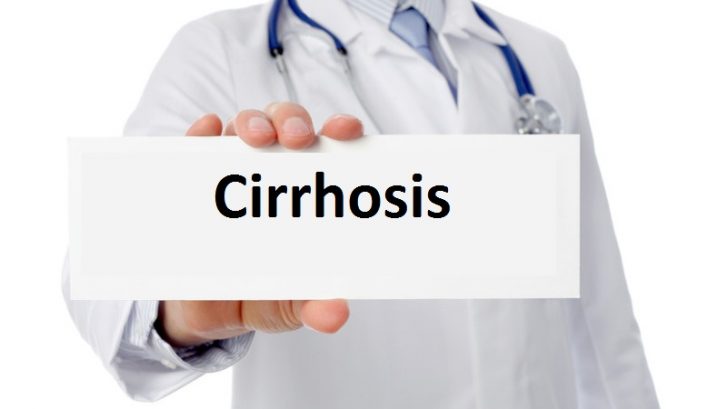Liver Cirrhosis
Cirrhosis is a late stage of scarring (fibrosis) of the liver caused by many forms of liver diseases and conditions, such as hepatitis and chronic alcoholism. The liver carries out several necessary functions, including detoxifying harmful substances in your body, cleaning your blood and making vital nutrients.
Cirrhosis occurs in response to damage to your liver. Each time your liver is injured, it tries to repair itself. In the process, scar tissue forms. As cirrhosis progresses, more and more scar tissue forms, making it difficult for the liver to function.
Decompensated cirrhosis is the term used to describe the development of specific complications resulting from the changes brought on by cirrhosis. Decompensated cirrhosis is life-threatening.
The liver damage done by cirrhosis generally can’t be undone. But if liver cirrhosis is diagnosed early and the cause is treated, further damage can be limited and, rarely, reversed.
Causes
A wide range of diseases and conditions can damage the liver and lead to cirrhosis. The most common causes are:
- Chronic alcohol abuse
- Chronic viral hepatitis (hepatitis B and C)
- Fat accumulating in the liver (nonalcoholic fatty liver disease)
Other possible causes include:
- Iron buildup in the body (hemochromatosis)
- Cystic fibrosis
- Copper accumulated in the liver (Wilson’s disease)
- Poorly formed bile ducts (biliary atresia)
- Inherited disorders of sugar metabolism (galactosemia or glycogen storage disease)
- Genetic digestive disorder (Alagille syndrome)
- Liver disease caused by your body’s immune system (autoimmune hepatitis)
- Destruction of the bile ducts (primary biliary cirrhosis)
- Hardening and scarring of the bile ducts (primary sclerosing cholangitis)
- Infection such schistosomiasis
- Medications such as methotrexate
Symptoms
Cirrhosis often has no signs or symptoms until liver damage is extensive. When signs and symptoms do occur, they may include:
- Fatigue
- Bleeding easily
- Bruising easily
- Itchy skin
- Yellow discoloration in the skin and eyes (jaundice)
- Fluid accumulation in your abdomen (ascites)
- Loss of appetite
- Nausea
- Swelling in your legs
- Weight loss
- Confusion, drowsiness and slurred speech (hepatic encephalopathy)
- Spiderlike blood vessels on your skin
- Redness in the palms of the hands
- Testicular atrophy in men
- Breast enlargement in men
Complications
Complications of cirrhosis can include:
Complications related to blood flow:
- High blood pressure in the veins that supply the liver (portal hypertension).Cirrhosis slows the normal flow of blood through the liver, thus increasing pressure in the vein that brings blood from the intestines and spleen to the liver.
- Swelling in the legs and abdomen.Portal hypertension can cause fluid to accumulate in the legs (edema) and in the abdomen (ascites). Edema and ascites also may result from the inability of the liver to make enough of certain blood proteins, such as albumin.
- Enlargement of the spleen (splenomegaly).Portal hypertension can also cause changes to the spleen. Decreased white blood cells and platelets in your blood can be a sign of cirrhosis with portal hypertension.
- Portal hypertension can cause blood to be redirected to smaller veins, causing them to increase in size and become varices. Strained by the extra load, these smaller veins can burst, causing serious bleeding. Life-threatening bleeding most commonly occurs when veins in the lower esophagus (esophageal varices) or stomach (gastric varices) rupture. If the liver can’t make enough clotting factors, this also can contribute to continued bleeding. Bacterial infections are a frequent trigger for bleeding.
Other complications:
- If you have cirrhosis, your body may have difficulty fighting infections. Ascites can lead to spontaneous bacterial peritonitis, a serious infection.
- Cirrhosis may make it more difficult for your body to process nutrients, leading to weakness and weight loss.
- Buildup of toxins in the brain (hepatic encephalopathy).A liver damaged by cirrhosis isn’t able to clear toxins from the blood as well as a healthy liver can. These toxins can then build up in the brain and cause mental confusion and difficulty concentrating. Hepatic encephalopathy symptoms may range from fatigue and mild impairment in cognition to unresponsiveness or coma.
- Jaundice occurs when the diseased liver doesn’t remove enough bilirubin, a blood waste product, from your blood. Jaundice causes yellowing of the skin and whites of the eyes and darkening of urine.
- Bone disease.Some people with cirrhosis lose bone strength and are at greater risk of fractures.
- Increased risk of liver cancer.A large proportion of people who develop liver cancer that forms within the liver itself have cirrhosis.
- Acute-on-chronic liver failure.Some people end up experiencing multiorgan failure. Researchers now believe this is a distinct complication in some people who have cirrhosis, but they don’t fully understand its causes.
Homoeopathic Treatment
- Homeopathic medicines treat the underlying cause of Cirrhosis of Liver, such as viral infection, genetic tendency, bad effects of alcohol, metabolic changes, etc. and thus help to treat effects of Cirrhosis of Liver.
- Homeopathy helps to control the further cellular damage. It cannot cure the scarred tissues, as such, as it is not possible to regenerate scarred tissues.
- When introduced at an early stage of cirrhosis, homeopathic medicines can effectively reduce the viral count (in Hepatitis caused by HBV and HCV) as well as give symptomatic relief without side effects.
- Homeopathic medications can prevent the progress of cirrhosis and in very early cases of liver cirrhosis, the medicines restore the majority of the normal functions of the liver.

